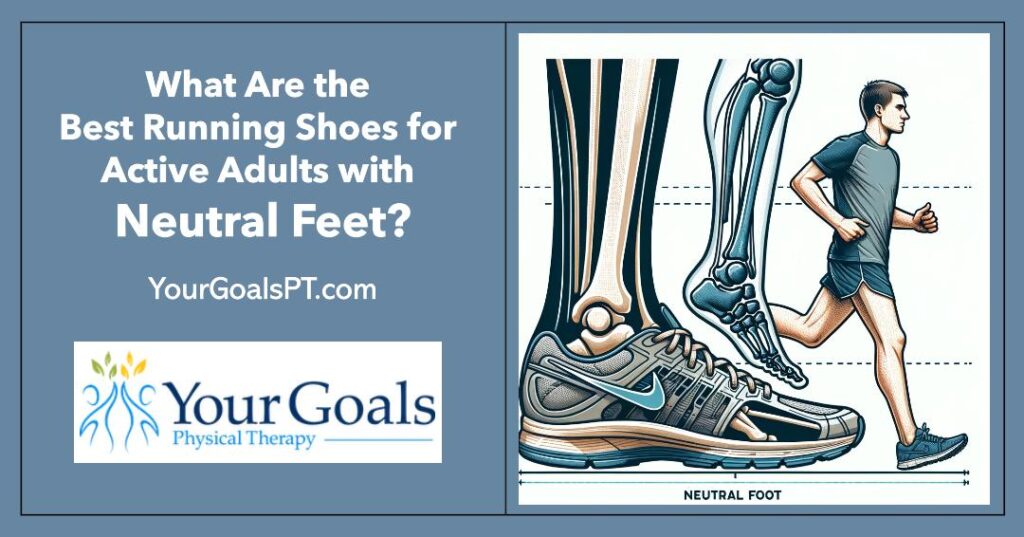
Are you looking to buy your next pair of running shoes and you’re not really sure what it is that you should buy? Maybe you’re not sure if you pronate, supinate, or if you have a neutral foot position? This series is perfect for you.
Today, we’ll be talking about the best running shoes for neutral feet. I’m gonna talk about what that means and what type of shoes would be ideal for you and some other things to consider when buying a sneaker. I also have articles about sneakers for supination and pronation.
I’m hoping that with all of this information, it makes diving into the world of, the many numbers of sneakers a little bit less stressful.
Now, a neutral foot really means that you don’t have a tendency to be too rigid or too flexible. You’re basically right down the middle. In an ideal sense, it means that your foot does exactly anatomically what it should do. There aren’t very many of you, so if you are that person, congratulations! Most of us have some tendency to either supinate more than is ideal or pronate more than is ideal. And we need to purchase shoes that compensate for that. But if you have a neutral foot position, it really means that while you’re standing you maintain your arch. Now there can be a little bit of variation, you could be a little bit one way or the other, but overall you’re pretty balanced. Your foot, the way that your structure is, everything is exactly how your body was designed to maintain it.
The big thing to make sure is that you are able to maintain this arch while you are running, squatting or doing any of your daily activities. It is great to be neutral in standing but it is far more important to maintain neutral while being functional.
Your foot should naturally hit a little bit on the outside of your heel, so more on the outside than in the middle or the inside, it should follow along that pinky toe and then you should push off with your big toe. It should be this really nice easy gait (walking pattern)
Having a neutral foot while walking means you have good shock absorption versus your foot being overly stiff. It gives you an ideal way of propelling yourself forward and having a good recoil. Shock absorption is a huge concern for runners, but with a natural foot you’re not really worried about that since your foot naturally helps with this.
The nice thing for you is you really can’t mess up what shoe you buy. You can pretty much buy anything you want that isn’t specifically for over pronation or supination.
For instance, there are all these low profile shoes, also known as minimalist running shoes. Those things are gonna be perfect for you. They had some that were just neutral or a light shoe.
You don’t have to be as concerned about where your shoe flexes or bends because your foot naturally has the stability. So even if your shoe does all sorts of weird things and bends in the middle and its basically a sock with a sole, you’re not gonna have a problem. Well with my one suggestion – I would still suggest wearing something that has a little bit of cushion just in case. It’s always a good idea to have as much shock absorption as possible. Running does generate a lot of force.
But when just talking about a neutral foot, you’re not having to worry having a cushion shoe. So that can be good news.
The other thing, the only other things to consider is just the general makeup of the shoe. You wanna make sure that if you’re gonna go out for the run, that they’re the right size. You wanna make sure that you have at least one thumb width of distance from the tip of your shoe to your biggest toe or your longest toe.
For example: For many people the second toe is the longest toe. In that case you wanna make sure that you can get your thumb between that second toe and the outside of the shoe. This makes sure that while you are decelerating you don’t jam your toes into the shoe, over and over again.
Second, you wanna make sure that when you take your shoe off, that you untie the shoe. This way when you put the shoe back on, you have to retie it. That does a couple things. It makes sure that you don’t stretch your shoe out. It also makes sure that you have the amount of stability the shoe is supposed to give you, maximizing the amount of support that it’s gonna give you.
Since we are talking about neutral shoes, there probably is not a whole lot of support coming from your shoe, but still the principle applies.
Lastly, another thing to consider is if you’re not just wearing a rubber sole (minimalist shoe), and there is a cushion or built-in insert. Then that insert is designed to reinflate after use. Let me explain. The shoe is designed with an insert that your foot sinks into while you wear it. Then over the next 12-24 hours, the insert “reinflates” to its original state. Unfortunately, as the shoe ages the longer that recovery (reinflation) time is. If you are gonna put a lot of miles on your shoes and they’ve got a cushion, you want to give them enough time for it to fully reinflate. Meaning you wanna have two pairs of shoes.
What to do if you’re gonna do long distances, like marathon lengths?
You need to buy a full half a size larger just so you can make sure, when your foot swells a little bit that you have, you have enough room in the shoe to accommodate this change.
For a neutral foot you want to stay with shoes that don’t have a whole lot of that external support/stability. You’re just really looking for shock absorption/ a little cushioning. Some people, when they have a neutral foot, they actually, they prefer the ones that are essentially a sock with just a sole as long as you can properly absorb impact, there’s really no definitive reason not to. Just as an abundance of caution, I always suggest buying something that does have a cushion so that you can get a little added shock absorption for running, especially for longer distances.
Well, I hope that this information is very helpful and if you need to, there are a couple other videos in this series.
I hope that you have a great time finding your new pair of sneakers. Bye.
We help active adults end their aches and pain, so they can reclaim their favorite recreational activities and live life to the fullest.

MEDICAL DISCLAIMER:
All information on this website is intended for instruction and informational purposes only. The authors are not responsible for any harm or injury that may result. Significant injury risk is possible if you do not follow due diligence and seek suitable professional advice about your injury. No guarantees of specific results are expressly made or implied on this website.